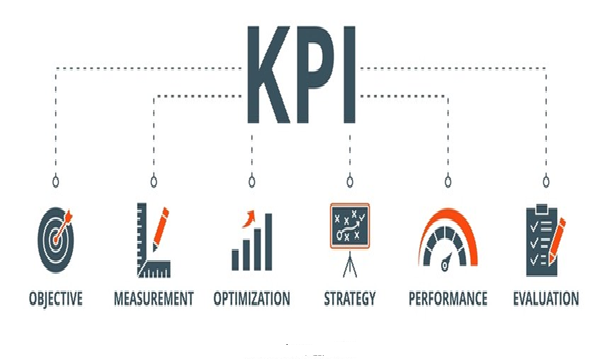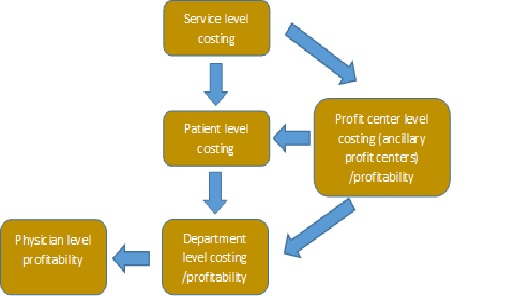KPI stands for key performance indicator, a quantifiable measure of performance over time for a specific objective. Setting performance targets can help you deliver the strategic changes that many growing businesses need to make. The top-level objectives of your strategic plan can be implemented through departmental goals, and setting targets based on KPIs is an ideal way of doing this.
A KPI should be simple, straightforward, relevant, actionable, aligned and easy to measure. Business analytics expert Jay Liebowitz says that an effective KPI is one that “prompts decisions, not additional questions.”
Some of the important KPIs Used in
Manufacturing
- Throughput – This is
probably one of the most fundamental and one of the most important of the KPIs
for the manufacturing industry The Throughput KPI measures the production
capabilities of a machine, line, or plant; also known as how much they can
produce over a specified time.
Throughput
= Production Units / Time (Hour or day)
- Productivity Whether your factory’s actual
operating performance (i.e. machinery and working operatives) meets your
forecasted volumes
Productivity
= Actual Production achieved / Production Target
- Cycle Time cycle time
is the average amount of time it takes to produce a product. The cycle
time metric can be used to measure the time it takes to manufacture a
completed product, each individual component of the final product, or even
go as far as to include delivery to the end user. Thus, cycle time can be
used to analyse overall efficiency of a manufacturing process on the macro
scale, as well as determine inefficiencies on a micro scale and for
identifying potential bottlenecks within the production process
Cycle
time = Process End Time-Process Start Time
It can
also be defined as following which includes the time between the stages of
production, inspection time and queue time, if any.
Lead
time= Tp+Tm+Ti+Tq
Tp=Average
Production time
Tm=Move
time between different stages
Ti=Average
Inspection time
Tq=Average
queue time
- Inventory Turnover – This is a
measure of how many times inventory is sold over a specific time period
and helps indicate resource effectiveness. Low ratio numbers indicate poor
sales and excessive inventory, while high ratio numbers represent strong
sales or insufficient inventory.
Raw
Material Inventory Turnover Ratio = Cost of Raw Material Consumption /Avg. Raw
Materials Stock
Finished
Goods Inventory Turnover Ratio = Cost of Goods Sold /Avg. Finished Goods Stock
- Avoided Cost –The avoided
cost manufacturing metric is an estimate of how much money you saved by
spending money. Seems strange, right? The most common example is how much
money is spent on machine maintenance vs. repair cost if a machine were to
break down, plus the lost production value associated with the repair
downtime.
Avoided
Cost = Estimated Repair Cost+ Production Losses-Preventive Maintenance Cost
- Return on Assets (ROA) – You might be thinking, this seems like it has less to do with manufacturing and more to do with finance. That is because it does. However, financial metrics are just as important as manufacturing metrics. You can’t have a business if you aren’t making money. This metric evaluates how well your business is making use of its assets (money). It is the annual net income divided by total assets..
Return
on Assets (ROA) = Net Profit / Avg. Capital Employed (Fixed Assets+ Net Current
assets)
Lean Manufacturing KPIs
Lean manufacturing
is a practice of Japanese origin (name drop: Toyota) whereby companies attempt
to minimize the amount of “waste” without sacrificing productivity. “Waste” in
this situation doesn’t mean garbage or refuge from the production process. It
actually represents any activity that does not add value from a customer’s
perspective. Listed below are some of the examples of lean manufacturing KPIs:
- Machine Downtime Rate – While this is
commonly used as a manufacturing metric to give a general snapshot of how
operation is going, it doesn’t paint a full picture. Machine downtime is a
combination of both scheduled downtime and unscheduled downtime.
Machine
Downtime Rate = Downtime Hours / (Downtime Hours + Operational Hours)
- Percentage Planned Maintenance – This production
metric is used to analyze the ratio of scheduled maintenance against the
unscheduled maintenance. This KPI is useful in identifying when more
preventative maintenance is required for certain assets.
No.
of Planned Maintenance Hours / No of Total Maintenance Hours *100
- Capacity Utilization – This production KPI
measures the amount of capacity being utilized as a function of total
capacity available. Ideally, companies want this number to be as high as
possible, as it indicates they are making better use of their production
capabilities and maximizing return on their assets. This metric can also
be used by management when deciding whether to take on new orders or
quoting lead time, as it gives a snapshot of available resources.
Capacity
Utilization = Actual Plant Utilization-Process Start Time / Total Productive
Capcity
- First Pass Yield and Final Pass Yield– This is one of the most fundamental
production KPIs. It calculates the percentage of products manufactured to
specification the first time through the process. This means that they do
not require any rework or become scrap. A higher FPY rate is very
desirable for any company.
First
Pass Yield Rate = Quality Units (without failure) / Total Units Produced
Final
Pass Yield Rate = Quality Passed Units (including reprocessed/downgraded)/
Total Units Produced
First pass yield
should not include products that were downgraded and sold as something else,
this is still considered a failure and would be captured in the final yield.
By measuring both
First Pass and Final Yield a site can see how much extra work is being used to
sell all the productions.
- Overall Equipment Effectiveness (OEE) – This key performance indicator is considered the gold standard for measuring manufacturing productivity. The higher your OEE, the more effective your equipment is.
Overall
Equipment Effectiveness (OEE) = Availability * Performance * Quality
OEE = (Good Count × Ideal Cycle Time) / Planned
Production Time
Availability = Run
Time / Planned Production Time.
Performance =
(Ideal Cycle Time × Total Count) / Run Time.
Quality = Good
Count / Total Count.
OEE = Availability × Performance × Quality.
- Overtime Rate – This metric compares
the amount of overtime worked by employees to the amount of standard
hours. It helps to identify inefficiencies in scheduling and/or
staffing..
Overtime
Rate = Overtime Hours / Regular Hours *100
- Employee Turnover – While this metric
isn’t manufacturing specific, it is as equally important as the other KPIs
in this list. While employee turnover typically has a negative connotation
associated with it, not all turnover is bad. Some turnover may be required
to remove underperformers and replace them with higher performers.
However, having too high of a turnover can lead to lower moral.
Employee
Turnover Rate = No. of Employees who left / Avg. No. of Employees *100
- Customer Returns (Rejects) –Keeping track of
returns is imperative. This metric calculates the percentage of products
that customers return because they have received a bad product. Needless
to say, a company should strive for the lowest percent possible.
Customer
Return Rate=No. of Products Returned/ Total No. of Products Shipped *100
- Scrap Rate –. It keeps track of the number of
products that are deemed scrap due to manufacturing defects that can’t be
reworked. It gives companies insight into the ratio of products deemed
scrap in a production run, helping identify an inefficient process.
Scrap
Rate = No. of Scrap Units / Total No. of Units
- On-Time Delivery – This is less
of a production performance metric, but a very important KPI in the
manufacturing sector nonetheless. You can have the most efficient production
line in the world, but if you can’t deliver on time, clients are not going
to want to work with you. This metric measures the percentage of products
delivered on time to clients.






